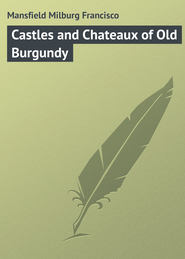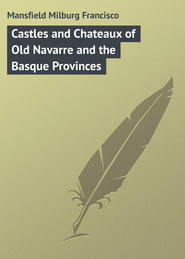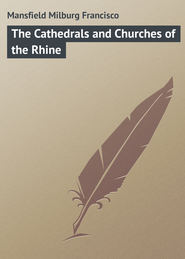По всем вопросам обращайтесь на: info@litportal.ru
(©) 2003-2024.
✖
The Automobilist Abroad
Настройки чтения
Размер шрифта
Высота строк
Поля
Road reformers, wherever found, should agitate for two things: the efficient maintenance of existing roads and the laying out of new and improved thoroughfares where needed.
In England and America the roadways are under the care of so many controlling bodies that they have suffered greatly. In England, for example, there is one eighteen-mile strip of road which is under the control of twelve different highway authorities, while the "Great North Road" from London to Edinburgh, is, in England alone, subject to seventy-two separate authorities. Local jealousies, rivalry and factions, and the quarrels of various road authorities interfere everywhere with good roads. The greatest good of the greatest number is sacrificed to village squabbles and to the advice of the local squire, who "detests motor-cars," as he does most other signs of progress. The roads of the future must be under some general control. At present, affairs in England are pretty bad; let America take heed in her new provisions for road supervision and government.
There is at present an almost Chinese jumble in the distribution of authority over roads in England and Wales. There are in London alone twenty-nine highway authorities, and 1,855 throughout the rest of the country.
In view of the fact that through motor traffic of all kinds will increase every year, it has been suggested that new loop roads should be constructed round towns on the chief roads, private enterprise being enlisted by the expectation of improved land value. This certainly would be a move in the right direction.
Mile-stone reform is another thing which is occupying the serious attention of the road user. In Continental Europe this matter is pretty well arranged, though there is frequently a discrepancy of two, three, or even five kilometres between the national mile-stones (bornes kilométriques) and the sign-boards of the various local authorities and touring clubs.
France has the best system extant of sign-boards and mile-stones. One finds the great national, departmental, and communal signs and stones everywhere, and at every hundred metres along the road are the intermediate little white-numbered stones, from which you may take your bearings almost momentarily, with never a fear that you are off your track.
In addition to this the sign-boards of the Touring Club de France, the Automobile Club de France, and the Association Générale Automobile satisfy any further demands that may be made by the traveller by automobile who wants to read as he runs. No such legible signs and warnings are known elsewhere.
There is uniformity in all the kilometre and department boundary stones in France; but in England "mile-stones" of all shapes, sizes, materials, and degrees of legibility are found.
There are some curious relics in the form of ancient mile-stones still in use, which may please the antiquarian, but are of no value to the automobilist. There is the "eightieth mile-stone on the Holyhead Road" in England, which carries one back through two centuries of road travel; and there is a heavy old veteran of perhaps a thousand years, which at one time marked the "Voie Aurelian," as it crossed Southern Gaul. It is found in Provence, in the Bouches-du-Rhône, near Salon, and is a sight not to be missed by those curiously inclined.
The question of dust is one of the chief problems yet to be solved for the benefit of automobilists and the general public alike. A good deal of the "dust nuisance" is due to badly made and badly kept roads, but we must frankly admit that the automobile itself is often the cause. "La Ligue Contre la Poussière," in France, has made some interesting experiments, with the below enumerated results, as related to automobile traffic. Road-builders and manufacturers of automobiles alike have something here to make a note of.
1. Sharp corners and excessive road cambers lead to slip, and, therefore, to dust.
2. More dust is raised on a rough road than on an equally dusty smooth road.
3. Watering the road moderately diminishes the dust.
4. The spreading on the road of crude oil, or of oil emulsions in water, is an important palliative.
5. Wood, asphalt, cobblestones, and square pavings are not dusty save after use by horse traffic.
6. Cars with smooth, boat-shaped under surfaces are less dusty than others.
7. Cars with large mud-guards and leather flaps near the road are more dusty.
8. Cars on high wheels well away from the ground are less dusty.
9. Cars with large tool-boxes at the back reaching low down between the back wheels are dusty.
10. Large car bodies are often dustier than small ones.
11. Blowing the exhaust near the ground increases the dust.
12. Cars fitted with engines having an insufficient fly-wheel or a non-uniform turning effort from any cause are more dusty.
13. A car mounted on very easy springs having a large up-and-down play will suck up the dust with each rise and fall of the body on rough roads.
14. Front wheels – or rolling wheels – raise less dust than back wheels or driving wheels.
15. Smooth pneumatic tires are dusty.
16. Solid or pneumatic rubber tires are more dusty at higher speeds, and with high-powered engines.
17. Non-skid devices, such as small steel studs, etc., do not increase the dust.
A writer on automobilism and roads cannot leave the latter subject without a reference to some of the obstructions and inconveniences to which the automobilist has to submit. If the automobilist proved himself a "road obstruction" like any of the following he would soon be banished and the industry would suffer.
A correspondent in the Auto, the chief Parisian daily devoted to automobilism, gave the following list of obstructions encountered in a journey of a thousand kilometres:
1. Drivers having left their horses entirely unattended – 75
2. Drivers who would not make way to allow one to pass – 86
3. Drivers asleep – 8
4. Drivers not holding the reins – 12
5. Drivers in carriages, or carts, without lights at night – 81
6. Drivers stopping their horses in the middle of the road or at dangerous turnings – 2
7. Drivers allowing their horses to descend hills unattended while they walked behind – 18
8. Dogs throwing themselves in front of one – 35
9. Flocks of sheep met without guardians near by – 8
10. Cattle straying unattended – 10
11. Geese, hens and children in the middle of the road – 30
Instead of seven sins, any of which might be deadly, there are eleven. Legislation must sooner or later protect the automobilist better than it does to-day.
Chapter IV
Hotels & Things
In all the literature of travel, that which is devoted to hotels has been conspicuously neglected. Certainly a most interesting work could be compiled.
Among the primitive peoples travellers were dependent upon the hospitality of those among whom they came. After this arose a species of hostelry, which catered for man and beast in a more or less crude and uncomfortable manner; but which, nevertheless, was a great deal better than depending upon the generosity and hospitality of strangers, and vastly more comfortable than sleeping and eating in the open.
In the middle ages there appeared in France the cabaret, the gargot, the taverne, and then the auberge, many of which, endowed with no more majestic name, exist even to-day.
ICI ON LOGE À PIED ET À CHEVAL
is a sign frequently seen along the roadways of France, and even in the villages and small towns. It costs usually ten sous a night for man, and five sous for his beast, though frequently there is a fluctuating price.
The aubergiste of other days, on the routes most frequented, was an enterprising individual, if reports are to be believed. Frequently he would stand at his door and cry out his prices to passers-by. "Au Cheval Blanc! On dine pour douze sous. Huit sous le cocher. Six liards l'écurie."
With the era of the diligences there came the Hôtels de la Poste, with vast paved courtyards, great stables, and meals at all hours, but the chambers still remained more or less primitive, and in truth have until a very recent date.
In England and America the roadways are under the care of so many controlling bodies that they have suffered greatly. In England, for example, there is one eighteen-mile strip of road which is under the control of twelve different highway authorities, while the "Great North Road" from London to Edinburgh, is, in England alone, subject to seventy-two separate authorities. Local jealousies, rivalry and factions, and the quarrels of various road authorities interfere everywhere with good roads. The greatest good of the greatest number is sacrificed to village squabbles and to the advice of the local squire, who "detests motor-cars," as he does most other signs of progress. The roads of the future must be under some general control. At present, affairs in England are pretty bad; let America take heed in her new provisions for road supervision and government.
There is at present an almost Chinese jumble in the distribution of authority over roads in England and Wales. There are in London alone twenty-nine highway authorities, and 1,855 throughout the rest of the country.
In view of the fact that through motor traffic of all kinds will increase every year, it has been suggested that new loop roads should be constructed round towns on the chief roads, private enterprise being enlisted by the expectation of improved land value. This certainly would be a move in the right direction.
Mile-stone reform is another thing which is occupying the serious attention of the road user. In Continental Europe this matter is pretty well arranged, though there is frequently a discrepancy of two, three, or even five kilometres between the national mile-stones (bornes kilométriques) and the sign-boards of the various local authorities and touring clubs.
France has the best system extant of sign-boards and mile-stones. One finds the great national, departmental, and communal signs and stones everywhere, and at every hundred metres along the road are the intermediate little white-numbered stones, from which you may take your bearings almost momentarily, with never a fear that you are off your track.
In addition to this the sign-boards of the Touring Club de France, the Automobile Club de France, and the Association Générale Automobile satisfy any further demands that may be made by the traveller by automobile who wants to read as he runs. No such legible signs and warnings are known elsewhere.
There is uniformity in all the kilometre and department boundary stones in France; but in England "mile-stones" of all shapes, sizes, materials, and degrees of legibility are found.
There are some curious relics in the form of ancient mile-stones still in use, which may please the antiquarian, but are of no value to the automobilist. There is the "eightieth mile-stone on the Holyhead Road" in England, which carries one back through two centuries of road travel; and there is a heavy old veteran of perhaps a thousand years, which at one time marked the "Voie Aurelian," as it crossed Southern Gaul. It is found in Provence, in the Bouches-du-Rhône, near Salon, and is a sight not to be missed by those curiously inclined.
The question of dust is one of the chief problems yet to be solved for the benefit of automobilists and the general public alike. A good deal of the "dust nuisance" is due to badly made and badly kept roads, but we must frankly admit that the automobile itself is often the cause. "La Ligue Contre la Poussière," in France, has made some interesting experiments, with the below enumerated results, as related to automobile traffic. Road-builders and manufacturers of automobiles alike have something here to make a note of.
1. Sharp corners and excessive road cambers lead to slip, and, therefore, to dust.
2. More dust is raised on a rough road than on an equally dusty smooth road.
3. Watering the road moderately diminishes the dust.
4. The spreading on the road of crude oil, or of oil emulsions in water, is an important palliative.
5. Wood, asphalt, cobblestones, and square pavings are not dusty save after use by horse traffic.
6. Cars with smooth, boat-shaped under surfaces are less dusty than others.
7. Cars with large mud-guards and leather flaps near the road are more dusty.
8. Cars on high wheels well away from the ground are less dusty.
9. Cars with large tool-boxes at the back reaching low down between the back wheels are dusty.
10. Large car bodies are often dustier than small ones.
11. Blowing the exhaust near the ground increases the dust.
12. Cars fitted with engines having an insufficient fly-wheel or a non-uniform turning effort from any cause are more dusty.
13. A car mounted on very easy springs having a large up-and-down play will suck up the dust with each rise and fall of the body on rough roads.
14. Front wheels – or rolling wheels – raise less dust than back wheels or driving wheels.
15. Smooth pneumatic tires are dusty.
16. Solid or pneumatic rubber tires are more dusty at higher speeds, and with high-powered engines.
17. Non-skid devices, such as small steel studs, etc., do not increase the dust.
A writer on automobilism and roads cannot leave the latter subject without a reference to some of the obstructions and inconveniences to which the automobilist has to submit. If the automobilist proved himself a "road obstruction" like any of the following he would soon be banished and the industry would suffer.
A correspondent in the Auto, the chief Parisian daily devoted to automobilism, gave the following list of obstructions encountered in a journey of a thousand kilometres:
1. Drivers having left their horses entirely unattended – 75
2. Drivers who would not make way to allow one to pass – 86
3. Drivers asleep – 8
4. Drivers not holding the reins – 12
5. Drivers in carriages, or carts, without lights at night – 81
6. Drivers stopping their horses in the middle of the road or at dangerous turnings – 2
7. Drivers allowing their horses to descend hills unattended while they walked behind – 18
8. Dogs throwing themselves in front of one – 35
9. Flocks of sheep met without guardians near by – 8
10. Cattle straying unattended – 10
11. Geese, hens and children in the middle of the road – 30
Instead of seven sins, any of which might be deadly, there are eleven. Legislation must sooner or later protect the automobilist better than it does to-day.
Chapter IV
Hotels & Things
In all the literature of travel, that which is devoted to hotels has been conspicuously neglected. Certainly a most interesting work could be compiled.
Among the primitive peoples travellers were dependent upon the hospitality of those among whom they came. After this arose a species of hostelry, which catered for man and beast in a more or less crude and uncomfortable manner; but which, nevertheless, was a great deal better than depending upon the generosity and hospitality of strangers, and vastly more comfortable than sleeping and eating in the open.
In the middle ages there appeared in France the cabaret, the gargot, the taverne, and then the auberge, many of which, endowed with no more majestic name, exist even to-day.
ICI ON LOGE À PIED ET À CHEVAL
is a sign frequently seen along the roadways of France, and even in the villages and small towns. It costs usually ten sous a night for man, and five sous for his beast, though frequently there is a fluctuating price.
The aubergiste of other days, on the routes most frequented, was an enterprising individual, if reports are to be believed. Frequently he would stand at his door and cry out his prices to passers-by. "Au Cheval Blanc! On dine pour douze sous. Huit sous le cocher. Six liards l'écurie."
With the era of the diligences there came the Hôtels de la Poste, with vast paved courtyards, great stables, and meals at all hours, but the chambers still remained more or less primitive, and in truth have until a very recent date.











